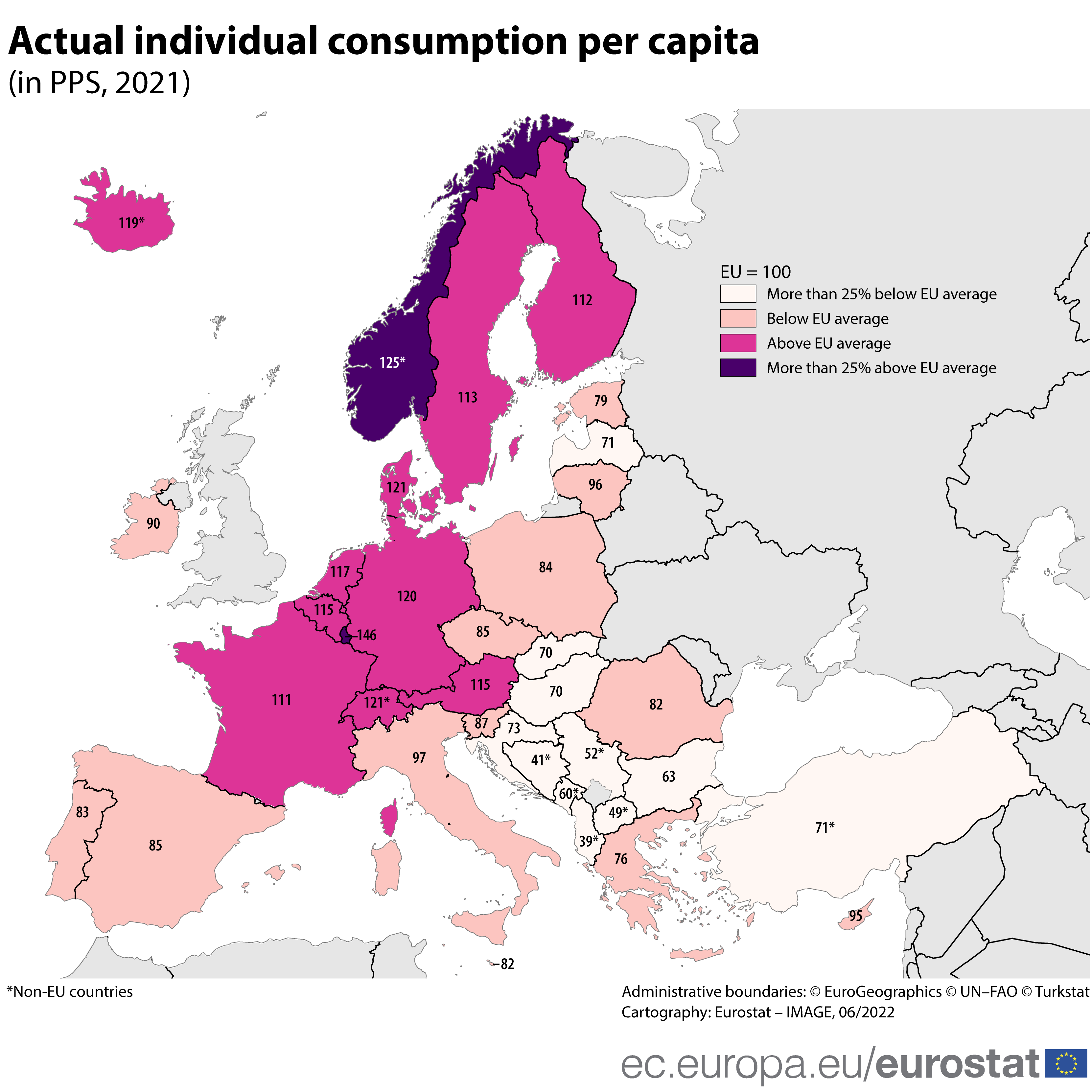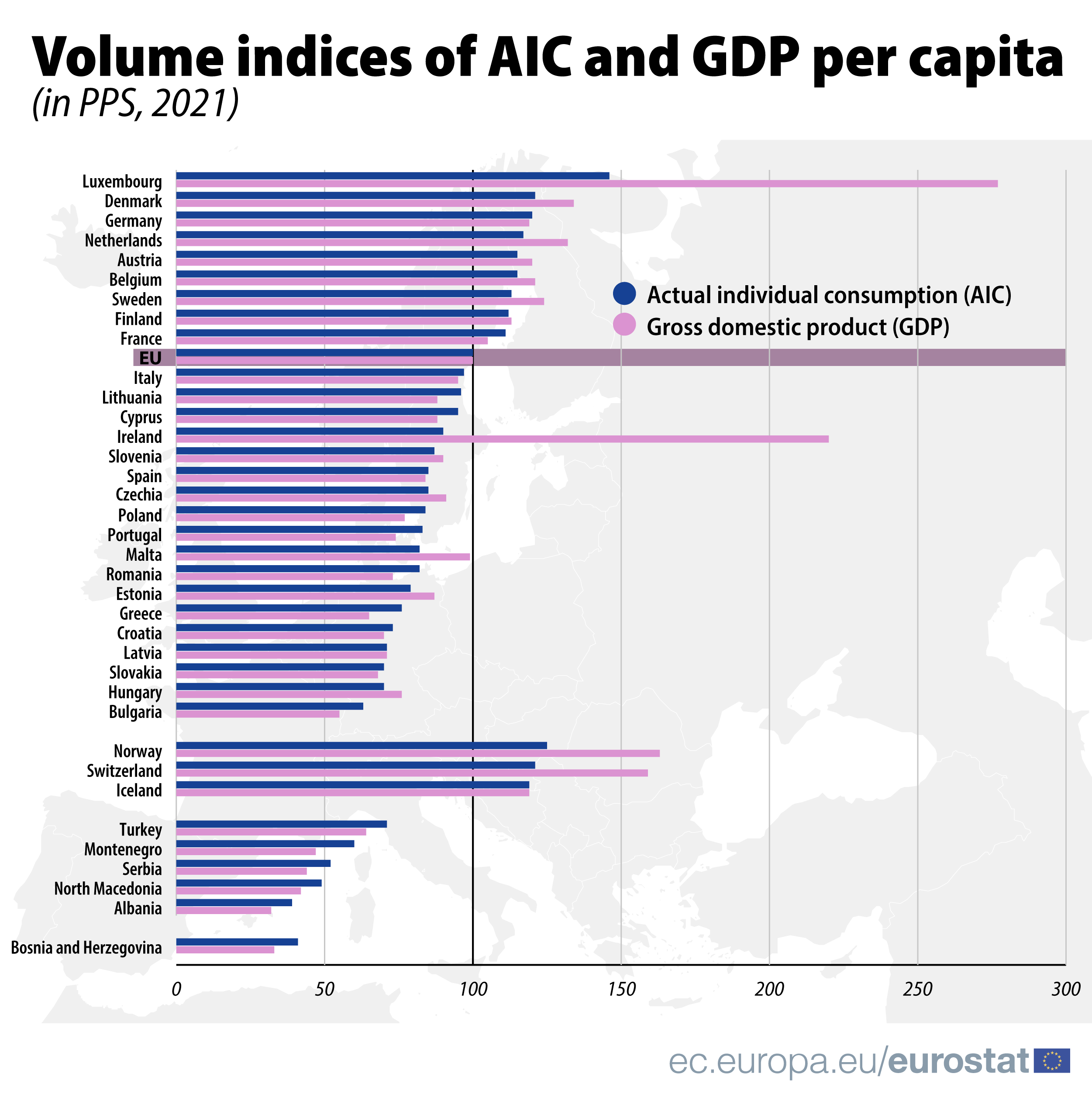Actual individual consumption (AIC) is a measure of material welfare of households. In 2021, AIC per capita expressed in purchasing power standards (PPS) varied from 63% to 146% of the EU average across the 27 Member States.
This information comes from data on purchasing power parities published by Eurostat today. The article presents some of the findings from the more detailed Statistics Explained article.
Source dataset: prc_ppp_ind
In 2021, nine Member States recorded AIC per capita above the EU average. Luxembourg (46%) was the only Member State that recorded AIC per capita 25% or more above the EU average. In Denmark, Germany, Netherlands, Belgium, Austria, Sweden, Finland and France, the levels were 10% or more above the EU average.
In thirteen Member States, AIC per capita was between the EU average and 25% below. In this category, there were significant differences across the Member States: in Italy, Lithuania, Cyprus and Ireland, the levels were 10% or less below the EU average, while Slovenia, Spain, Czechia, Poland, Portugal, Malta and Romania were between 11% and 20% below. Estonia and Greece were 21% and 23% below the EU average, respectively.
Five Member States recorded AIC per capita 25% or more below the EU average. Croatia, Latvia, Hungary and Slovakia were between 27% and 30% below, while Bulgaria recorded AIC per capita 37% below the EU average.
GDP per capita ranged from 55% of EU average in Bulgaria to 277% in Luxembourg
Gross domestic product (GDP) per capita, a measure of economic activity, also shows substantial differences across the EU Member States.
In 2021, GDP per capita expressed in PPS ranged between 55% of the EU average in Bulgaria and 277% in Luxembourg. Ten Member States recorded a level of GDP per capita above the EU average in 2021.
Source dataset: prc_ppp_ind
For more information:
- Statistics Explained article on consumption and GDP per capita
- Dedicated section on purchasing power parities
- Database on purchasing power parities
- Metadata on purchasing power parities
Methodological notes:
- The provisional estimates for 2021 presented in this news article are based on GDP and population data for 2021, extracted on 6 June 2022, and the most recent PPPs available. Revised estimates will be published in December 2022.
- Luxembourg: The high GDP per capita in Luxembourg is partly due to the country's large share of cross-border workers in total employment. While contributing to GDP, these workers are not taken into consideration as part of the resident population which is used to calculate GDP per capita.
- Ireland: The high level of GDP per capita in Ireland can be partly explained by the presence of large multinational companies holding intellectual property. The associated contract manufacturing with these assets contributes to GDP, while a large part of the income earned from this production is returned to the companies’ ultimate owners abroad.
To contact us, please visit our User Support page.
For press queries, please contact our Media Support.



